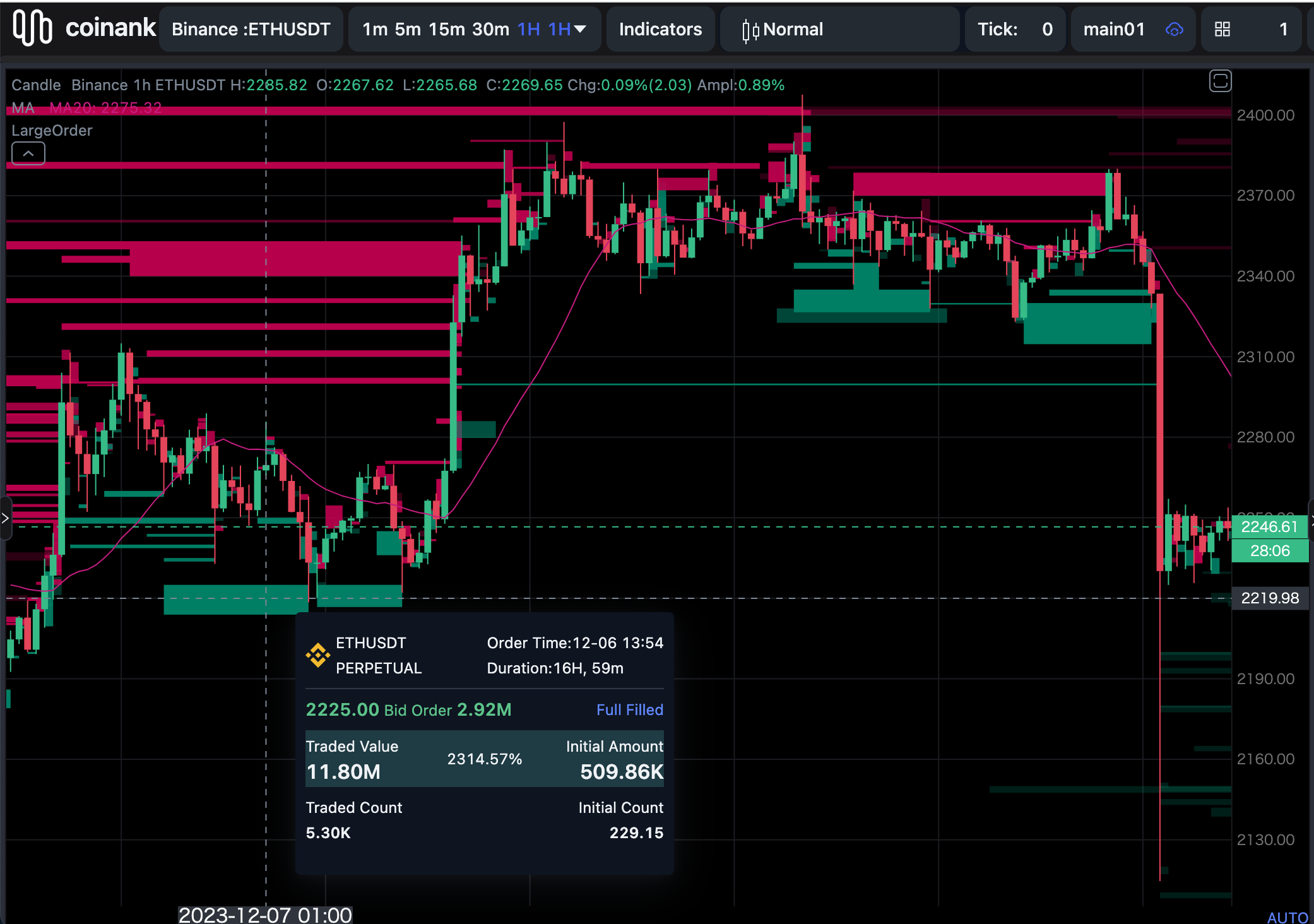Large-amount entrusted orders (main orders)
1. Definition of major orders
The main large order is independently developed by the Coinank team. Based on market handicap data, it monitors the status of large orders in real time, tracks the main pending orders, and helps investors seize trading opportunities.
Basic characteristics: The larger the amount of the large order, the stronger the main force’s control.

Data characteristics of major orders:
[Length] The longer the horizontal line, the longer the pending order time; the shorter the horizontal line, the shorter the pending order time;
[Thickness] The thicker the horizontal line, the larger the order amount; the thinner the horizontal line, the smaller the order amount;
[Dark and light] Dark colors indicate that there is a transaction, and light colors indicate that there is no transaction.
In the figure above, the first point is that the longer the length, the longer the order has been pending.
The second point is thickness. This may be more critical. The thicker it is, the greater the amount of funds and the stronger the ability of the main force.
The third point is color. Red is a sell order, green is a buy order, dark colors have transactions, and light colors have no transactions.
Specific data:
Order direction: [sell to open short] [buy to open long] [sell to close long] [buy to close short] [buy] [sell]
Transaction status: Pending orders, canceled orders, partially executed, partially executed and canceled orders, fully executed
Changes in positions: positions increase, positions decrease
Transaction details: transaction amount, transaction ratio, initial order amount, order price, maximum single transaction, number of transactions
The amount determines the determination of the main force, and the price determines the relevant support and pressure levels
Time details: order duration, order start time
If the main force continues to keep the order, it has always been there, indicating that the main force is very optimistic about this position, and it can be used as a relevant support level and pressure level
2. For long-term oversized orders, there is a corresponding supporting pressure on the market price and direction
3. Pending orders that are frequently bought or sold within a certain period of time have a better supporting pressure on the price. The specific example is the large order wall
資訊內容不構成投資建議,投資者應獨立決策並自行承擔風險
 BTC市值:
BTC市值: 